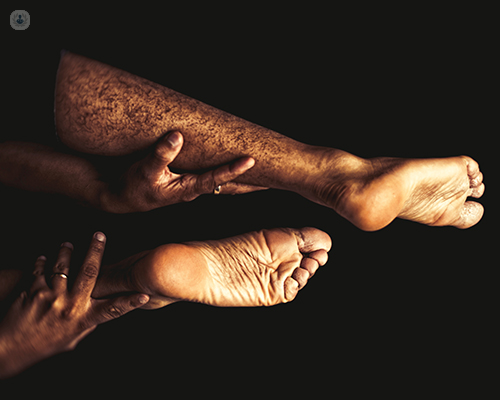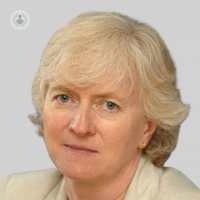How to treat varicose veins: a case study
Written in association with:Varicose veins are a common problem, which can cause unpleasant symptoms of aching legs, skin discolouration and leg ulcers. In previous articles, expert vascular surgeon Ms Sophie Renton has talked about the symptoms and treatment for varicose veins. Now, she brings us the true story of one of her cases to show us how these treatments are put into action.

The patient
Patient T, a 43-year-old accountant, had suffered from varicose veins ever since she was a teenager. Back in the 1990s, she had undergone surgery, which consisted of a high tie and strip to both legs (the standard procedure at the time). However, the varicose veins later returned. Further groin surgery yielded only limited success, while the injection treatment she underwent for some spider veins had little effect – the veins came back soon after the treatment.
On the recommendation of a friend, she paid me a visit.
The problem
The patient’s recurrent varicose veins were becoming a big problem. She was experiencing aches in her legs and was very unhappy with their appearance.
I used ultrasound to examine her legs. This imaging technique allows me to view the patient’s anatomy and visualise the site of the problem in order to identify the cause and make a treatment plan.
Although Patient T had had surgery previously, there were still leaking veins. A large vein in the thigh of her right leg was leaking, filling the varicose veins in her calf, while a large vein arising from the groin was filling large veins down her left leg.
The plan
We talked about possible options. Patient T did not want an anaesthetic. I told her that was fine and that there were options that didn’t require anaesthesia. In the end, we agreed on a treatment plan.
Learn more about varicose vein treatment here
The treatment
I used a technique called mechanochemical ablation to treat the big vein in her right leg. This technique combines a mechanical approach (a catheter with a rotating tip) with a sclerosing agent. It is almost painless, like being touched by an electric toothbrush. I then used foam sclerotherapy to treat the varicose veins in her calf.
Patient T was delighted with the results of the first session – the unsightly veins had disappeared and the ache in her leg had gone!
She returned for a second session to deal with the left leg. Foam sclerotherapy, again, achieved an excellent result in dealing with the main varicose veins, after which I was able to use microsclerotherapy to treat her spider veins.
If you are concerned about varicose veins and want an expert's professional opinion, visit Ms Renton's Top Doctors profile and book an appointment now!


